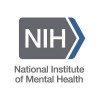
Painful Procedures in the Emergency Department: A Distraction Intervention (3-5 Year Olds)
AnxietyPainThis study is designed to assess the effectiveness of the video-based intervention over and above current standard practice for pain control in the pediatric emergency department (ED). This is a single-center trial based at the IWK Health Centre. The primary outcome will be based on the Child-Adult Medical Procedures Interaction Scale (CAMPIS) coding of the video-taped pain response of the research participants (3-5 years old).

A Study of Risperidone Monotherapy in Bipolar Anxiety
Bipolar DisorderPanic Disorder1 moreThe specific aim of this study is to evaluate the efficacy, tolerability, and safety of risperidone monotherapy in the treatment of ambulatory bipolar disorder with comorbid lifetime panic disorder or generalized anxiety disorder and current at least moderately severe anxiety.

Telephone-Based Care Management Program for Individuals With Anxiety Disorders
Anxiety DisordersPanic DisorderThis study will determine the impact of a telephone-based care management program for primary care patients with panic disorder or generalized anxiety disorder.

Study Of Generalized Anxiety Disorder
Anxiety DisorderAnxiety DisordersThis study is designed to evaluate the efficacy and safety in Generalized Anxiety Disorder patients

Combination Chemotherapy Plus Fluoxetine in Treating Patients With Advanced or Recurrent Non-Small...
Anxiety DisorderDepression2 moreThis trial is designed to test the efficacy of fluoxetine to improve patient's quality of life during chemotherapy. An innovative application of a selective serotonin reuptake inhibitor may modulate the effects of fatigue, anxiety and depression which worsen quality of life.

New Drugs in the Treatment of Mood Disorders
Anxiety DisorderMood Disorder1 moreThis clinical study compares the effectiveness of two anticonvulsants Lamotrigine (Lamictal) Monotherapy and Gabapentin (Neurontin) in patients with treatment resistant affective disorders. We initially have found that the response rate to lamotrigine (51%) exceeded that of gabapentin (28%) or placebo (21%). In this study the placebo phase has been dropped so that we examine possible clinical and biological factors predictors of response. The drugs will be given in a randomized order for six weeks each and you will not know when you are on a given one. There will be a 2-4 week "washout" period between treatments. If you respond well to one of these treatments, a longer open continuation period will be offered at the end of this study. This would involve one or both drugs in combination. A variety of rating scales and brain imaging procedures will also be offered before and during each drug evaluation. Both lamotrigine and gabapentin are generally well tolerated. A serious potentially life threatening rash occurs in about 1/500 patients treated with lamotrigine, however. Common side effects are rash, dizziness, unsteadiness, double vision, blurred vision, nausea, vomiting, insomnia, sedation, and headache. These side effects are usually mild, and resolve with continued time on the drug or a decrease in dosage.

Evaluation of a Group Therapeutic Exercise Program
DepressionAnxiety Disorders2 moreModerate to vigorous physical activity can reduce symptoms of mental disorders like major depression, anxiety disorders, insomnia, and ADHD. However, in Germany there are no group therapeutical exercise programs for psychotherapy patients in an outpatient context. The current study aims to examine the effectiveness of a manualized exercise program, named ImPuls, which consists of a supervised and non-supervised endurance training in moderate to vigorous intensity and behaviour change techniques.

A Pilot fMRI Study of TMS in Late-Life Severe Worry
Anxiety Disorders GeneralizedInvestigators will test a novel intervention through experimental therapeutic approach using fMRI-directed Intermittent Theta Burst Stimulation (iTBS), a high frequency TMS paradigm, for the treatment of severe, uncontrollable worry. While worry is a universal human experience, severe and excessive worry has been recently linked to increased risk of stroke and other cardiovascular diseases, increased risk of conversion to Alzheimer's disease as well as to higher risk of all-cause mortality in midlife and late-life. Severe, uncontrollable worry has been repeatedly associated with reduced quality of life and impaired functioning. Current treatment choices (antidepressant/anxiolytic medications and psychotherapeutic interventions) have been proven moderately efficacious in reducing anxiety/depression burden, but ineffective in reducing worry severity, a phenomenon that may contribute to the high relapse rates associated with mood and anxiety disorders. Our research indicated that worry severity is associated with hyperactivation in specific regions such as orbital frontal cortex, superior parietal gyrus, amygdala and parahippocampal gyrus. This pilot study will explore the efficacy of targeting one of these regions with iTBS. Based on investigators' previous results, the most accessible target is the right superior parietal gyrus (rSPG) - a region that remained significantly associated with severe worry after controlling for effects of comorbid depression or overall anxiety. As this region showed an increased in cerebrovascular flow in association with worry severity, investigators will use iTBS (5x/week for 2 weeks) to modulate cortical plasticity in this region and consequently, to reduce worry severity. TMS during wakefulness has been shown to alter subsequent sleep [4], Further, changes in sleep in response to TMS has been associated with how participants respond to the TMS as a treatment [5]. Thus, the study will measure sleep throughout the protocol to determine whether sleep changes as a function of TMS and whether sleep changes are associated with treatment response.

Computer-Delivered PFI for Anxiety Sensitivity/Alcohol Intervention for Hazardous Drinkers With...
Alcohol DrinkingAnxiety1 moreHazardous alcohol consumption is one of the leading causes of preventable deaths in the United States. Further, it is highly comorbid with anxiety and depressive symptoms and disorders; hazardous alcohol use is associated with increased anxiety/depression. Indeed, 'affectively-vulnerable hazardous drinkers' (i.e., drinkers with elevated negative mood states or psychopathology) are 'at risk' for higher drinking rates, more problematic drinking, worsened mental health, and greater disability. Specialty care options are needed to address the unique 'affective needs' of hazardous drinkers. One promising intervention approach is to employ personalized feedback interventions (PFI). These interventions are brief, efficient, and have been shown to be effective in a number of settings and across an array of populations. However, PFIs have not been evaluated among affectively vulnerable hazardous drinkers. In order to address the heterogeneity of negative mood states and disorders among hazardous drinkers, there is a need to theoretically orient the intervention approach on underlying transdiagnostic processes that underpin affective psychopathology. Anxiety sensitivity (AS), the tendency to fear anxiety-related sensations, is a core transdiagnostic vulnerability factor underlying the etiology and maintenance of anxiety disorders, other emotional disorders, and hazardous drinking. AS is malleable in response to psychosocial interventions, making it a prime risk factor to target in prevention/intervention programs, including PFI approaches. Integrated treatments that address hazardous drinking via AS are nonexistant. As most hazardous drinkers typically do not access treatment because of such barriers as cost, time commitments, stigma, and logistics (e.g., travel, scheduling appointments), there is a need to develop an accessible, brief, integrated tool to explicitly address the drinking-affective vulnerability comorbidity via AS. To address this public health gap, the current proposal seeks to employ a computer-delivered integrated PFI that directly addresses hazardous drinking-AS in a personalized manner. Hazardous drinkers with elevated AS will be randomly assigned to receive one session of PFI or attention information control with follow-up assessments at one week and one month post-intervention. The PFI will focus on targeted feedback about drinking behaviors, AS, and adaptive coping strategies.

Binge Eating Anxiety and Mood
Binge-Eating DisorderBinge Eating2 moreBinge Eating Disorder (BED) is the most common eating disorder, and currently, the best behavioral treatments only work for 40-60% of adults. BED often co-occurs with mood and anxiety disorders, and both are associated with neurocognitive deficits related to executive function (EF). These EF deficits contribute to worsening BED symptoms and make it difficult for these adults to adhere to treatment recommendations. The proposed study aims to develop an EF training enhanced behavioral treatment for BED and compare its effectiveness to the standard cognitive behavioral therapy for patients with BED and a co-occurring mood or anxiety disorder.
